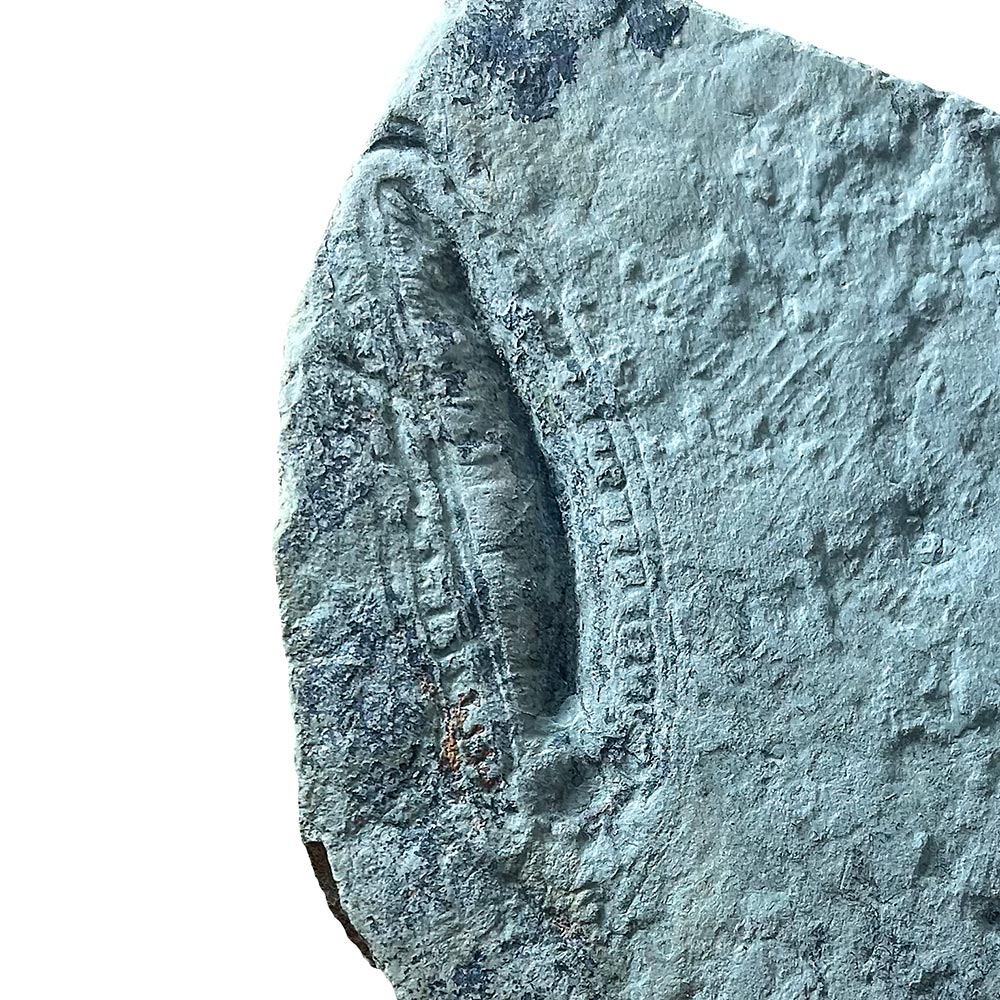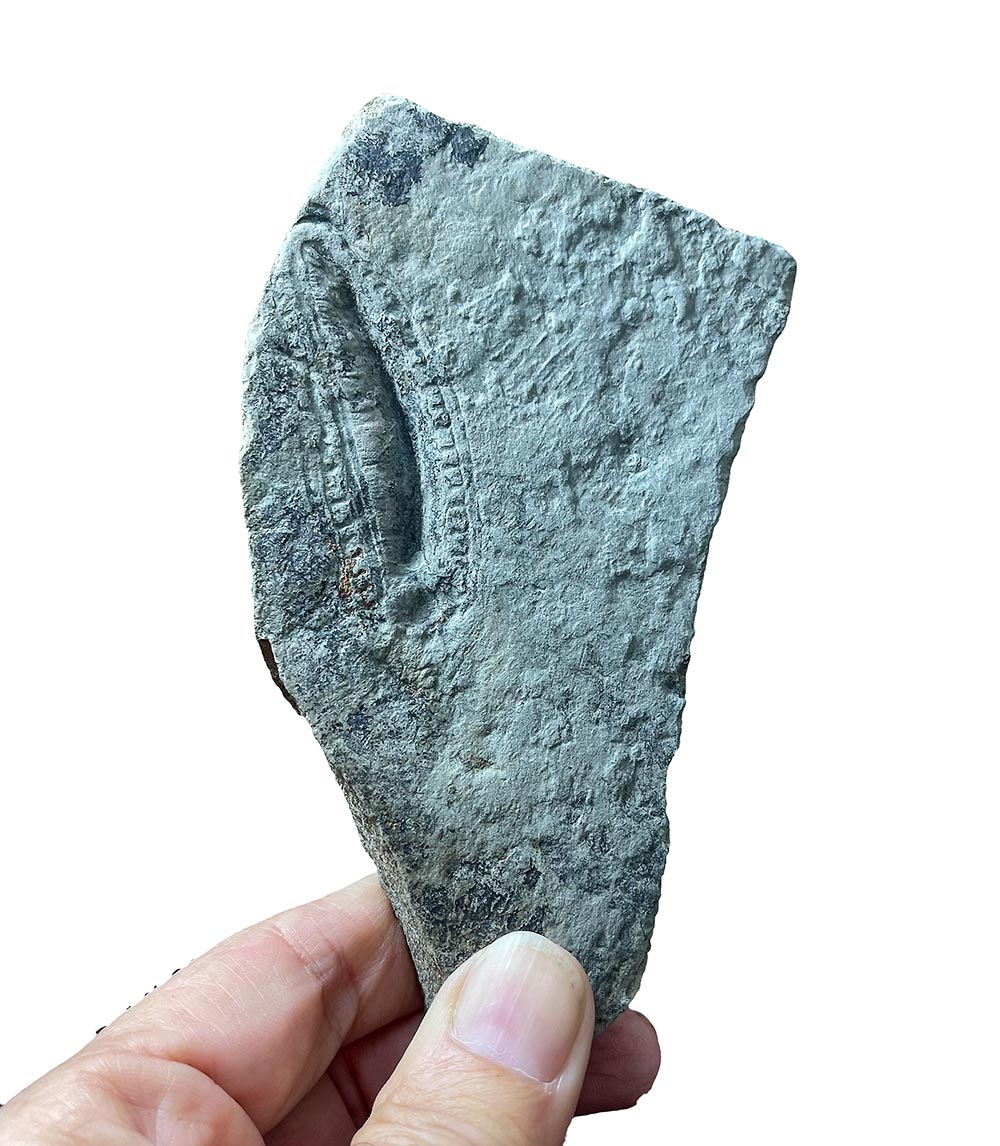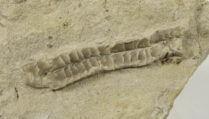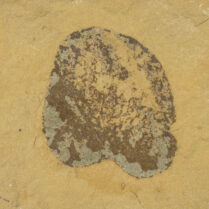Description
Kimberella quadrata
Precambrian
Penega Formation
East Angelsk, White Sea Russia
Very large 35mm animal on 78mm slab. Extremely large for this species. One of the largest we have seen.
Kimberella is an extinct genus of soft-bodied organisms that lived approximately 555 million years ago, during the Ediacaran period. This period is known for some of the earliest complex multicellular life forms, just before the Cambrian Explosion. Fossils of Kimberella have been found in Russia and Australia, making it one of the few well-preserved organisms from this ancient era.
The structure of Kimberella suggests it had a flattened, oval body and a soft, flexible exterior with a muscular foot-like structure similar to those seen in some modern mollusks. It may have used this structure for movement, possibly like a slug, and was likely a grazer that fed on microbial mats on the ocean floor. Due to its feeding habits, some paleontologists propose Kimberella might have been an early ancestor or close relative of mollusks, although this is still debated. Its unique features have made Kimberella important in understanding early animal evolution and the development of more complex body structures.






